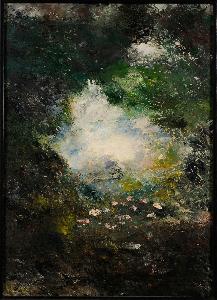August Strindberg
August Strindberg;Strindberg
Place: Stockholm
Born: 1849
Death: 1912
Biography:
Early Life and Career
August Strindberg, a Swedish playwright, novelist, poet, essayist, and painter, was born on January 22, 1849, in Stockholm, Sweden. His early life was marked by emotional insecurity, poverty, and religious fanaticism, which later influenced his writing style.
Artistic Breakthrough
Strindberg's breakthrough in the art world came with his play Master Olof, rejected by the Royal Theatre in 1872. However, it was not until 1881, with the première of New Theatre, that he gained recognition at the age of thirty-two.
Naturalistic Dramas
Strindberg's plays, such as The Father (1887), Miss Julie (1888), and Creditors (1889), pioneered naturalistic dramas. These works built upon the accomplishments of Henrik Ibsen's prose problem plays, rejecting the structure of the well-made play.
Influence on Modern Swedish Literature
Strindberg is considered the "father" of modern Swedish literature, with his novel The Red Room (1879) frequently described as the first modern Swedish novel. His influence can be seen in various aspects of Swedish art and culture.
Notable Works and Exhibitions
* Staden (Nationalmuseum, Stockholm, Sweden): A dark landscape dominated by monumental cloud formations. * Underlandet (Nationalmuseum, Stockholm, Sweden): An example of Strindberg's innovative painting style.
- View Staden on Wikioo.org
- Explore Underlandet on Wikioo.org
- Learn more about August Strindberg's life and work on Wikipedia
Legacy
Strindberg's legacy extends beyond his writings, influencing the development of modern Swedish literature and art. His innovative approach to drama and painting continues to inspire artists and writers worldwide. Important Dates:
* January 22, 1849: Born in Stockholm, Sweden * 1881: Breakthrough with New Theatre * May 14, 1912: Passed away in Stockholm, Sweden



